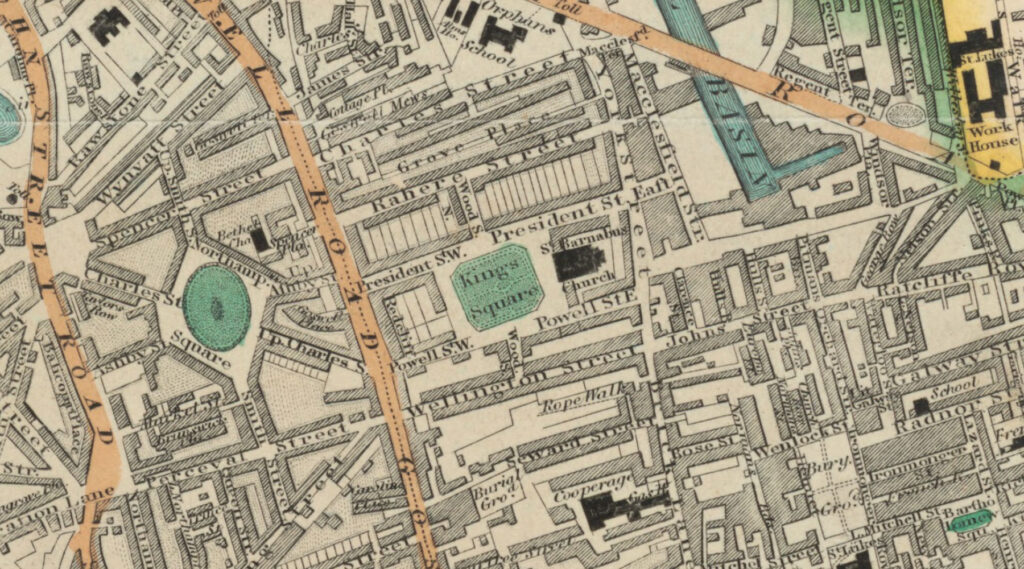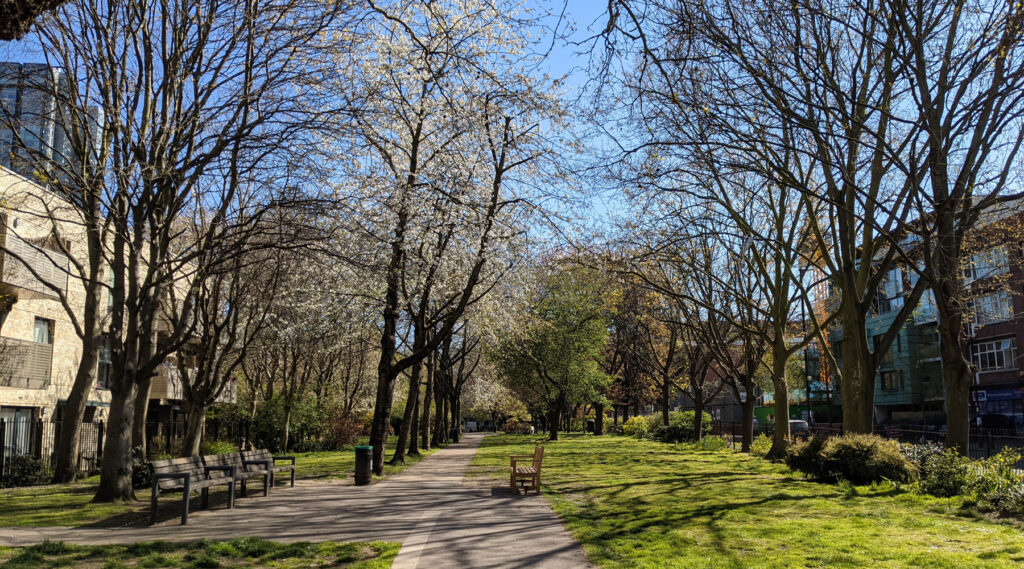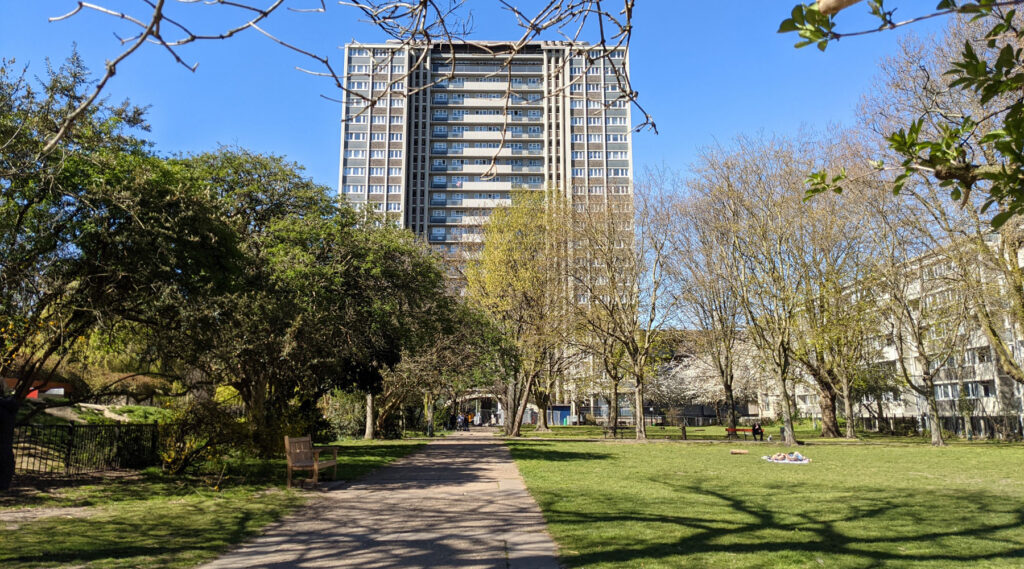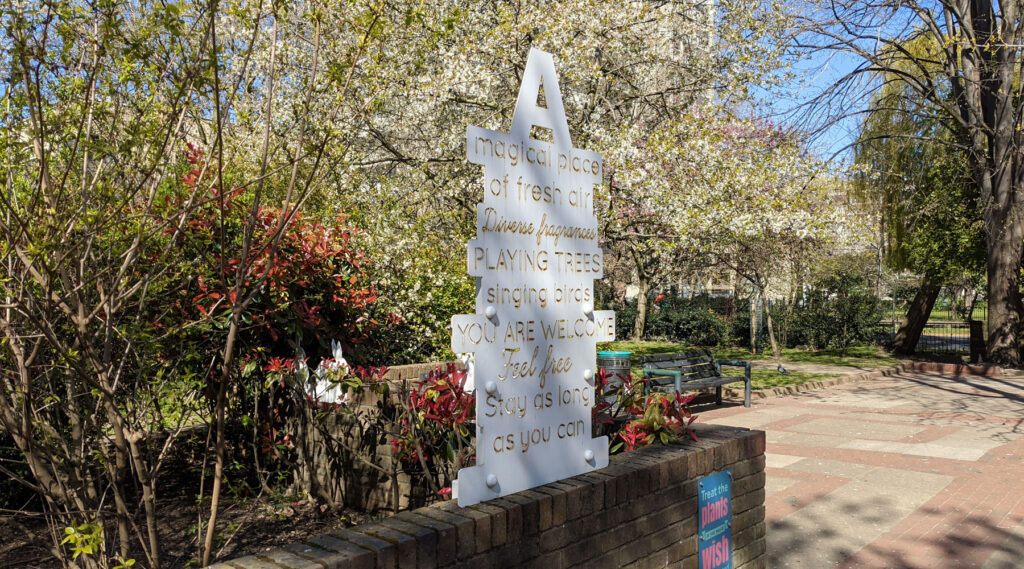This is a large municipal park surrounded by tower blocks that was once a middle-class Georgian housing development and later gained fame for some marching hammers.
The area was still outside London and mainly fields owned by St Bartholomew’s Hospital when in 1822 it was bought by the Church Building Commission to build a large church. As a large church in the middle of fields would be odd, they also planned to develop the fields into middle-class housing to provide the necessary parishoners.
The development saw a classic garden square, surrounded on three sides by decent housing and the church on the fourth.
This was the origins of King’s Square.
Their plan worked, and Booth’s Poverty Maps in the 1880s showed a lack of poverty, with the area surrounding the square showing up as middle-class. The garden was laid out as a classic of its time, seeming to be lined with trees and large lawns in the centre, a rain shelter in the centre and a playground in one corner.
By the turn of the 20th century, it had somehow lost its possessive King’s Square and become simply King Square.
However, WW2 was to change everything. The area was badly affected by bombs, with most of the houses surrounding it suffering damage, especially to the southeastern corner. There are photos of the area during the war suggesting a bomb shelter was built in the gardens.
The houses were not rebuilt but cleared, and on three sides large council housing blocks constructed. The old roads around the square were removed and the square enlarged. It also got bigger to the south, where the row of houses was also demolished and replaced with parkland.
The church was damaged, but repaired in the 1950s, and renamed. It had always been St Barnabas, but after the war, several local parishes were merged, and the church renamed St Clement with St Barnabas and St Matthew, although it’s known as St Clement’s Finsbury for short.
By 1996, the estate, designed by Joseph Emberton was complete and the parkland had also been completed, with new trees and initially laid out with large open grasslands.
The sports pitches were refurbished in 2010 with contributions from the Arsenal football club while the playground areas were revamped in 2011. Rebuilding work in 2016 uncovered a burial ground.
The park is now designated as a Site of Local Importance to Nature Conservation.
People with a good memory might think the park and church look familiar – was the opening sequence in Pink Floyd’s Another Brick in the Wall Part 2 from 1979. If visiting, watch out for marching hammers.











Wondering whether you meant “the necessary parishioners” where the post says “the necessary prisoners”.
Corrected thanks.
Thanks -one of my earliest memories was visiting friends from infants school in King Square and adjacent Rahere St
Typo? Should prisoners read parishioners?
I lived on this estate in the 1960s. Should you have said by 1966 the estate was completed, rather than by 1996?
Having lived in this area the map is interesting given that Moreland Street is shown as Charles Street ( So I could have gone to Charles Street School instead of Moreland Street School!) This also may explain the existence of New Charles Street which used to run alongside Hall Street before redevelopment in the 1960s.
I well know this park and for locals the church was always referred to as St Barnabus Church